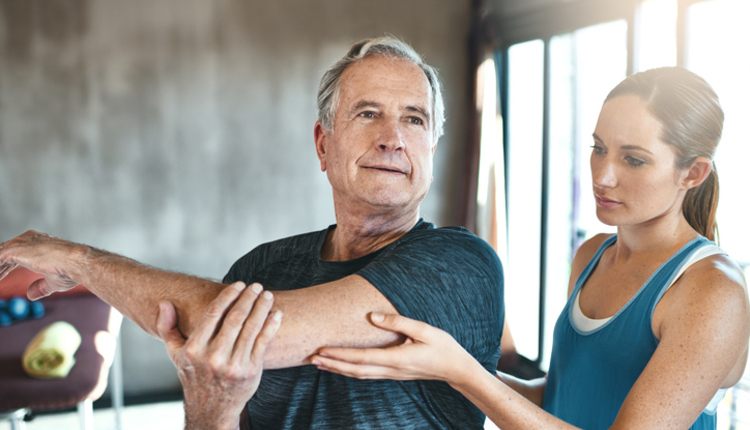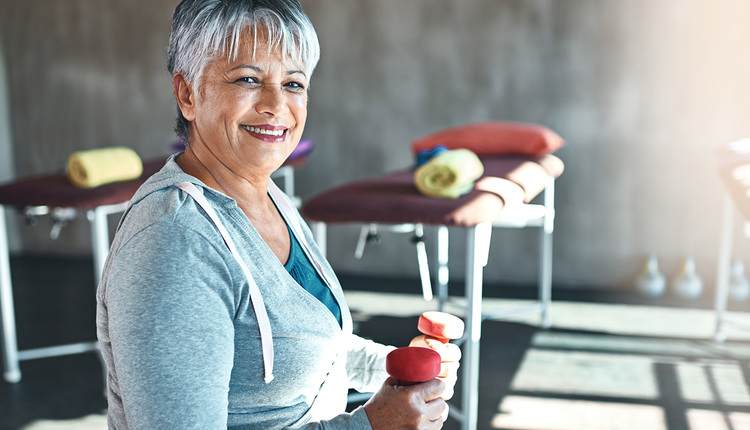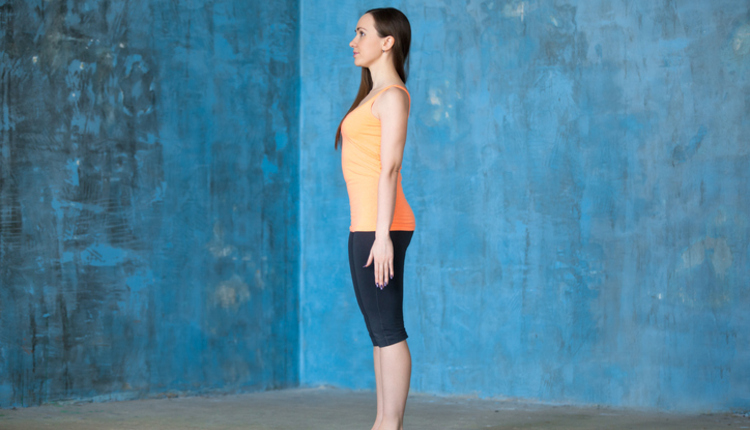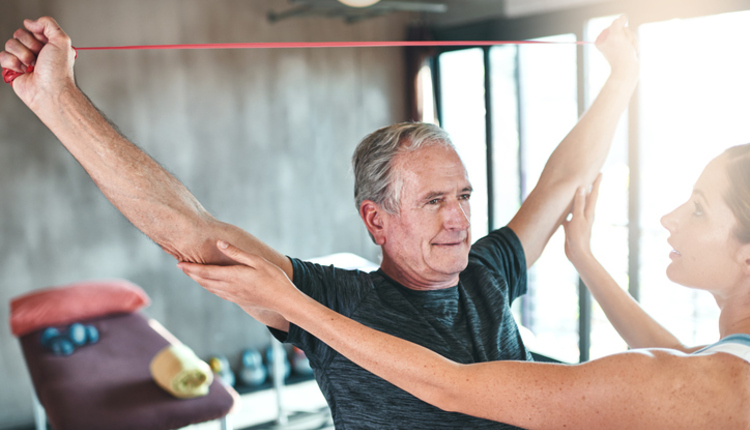
According to the National Osteoporosis Foundation, 1 out of 2 women and 1 out of 4 men over 50 will have a wrist, hip or spine fracture due to osteoporosis. If you work with clients with osteoporosis or osteopenia, it is imperative to understand how to teach them to exercise properly and safely in order to decrease the risk of the progression of this disease. This two-part series will focus on prevention, treatment and management of osteoporosis through exercise. Effective and safe exercise can improve quality of life, overall health and keep osteoporosis under control.
1. Understanding osteoporosis and osteopenia
2. Who is at risk and why are instances increasing
3. Effects of osteoporosis
Topics over this two-part series will include
1. Understanding osteoporosis and osteopenia2. Who is at risk and why are instances increasing
3. Effects of osteoporosis
4. Protecting your bones through exercise
5. Balance and preventing falls
6. Posture and body mechanics
7. Guidelines for daily life activities to prevent fractures
Bone is a living issue which has small spaces that become larger as we lose bone density. Our bodies are always breaking down bone and replacing it with new bone. In the reabsorption stage, the old bone is broken down and in the formation stage, new bone is built but as we age, the replacement process slows down and the outside of the bone thins as well. Calcium and phosphate are essential for bone formation; without adequate levels, bone reformation slows down further.
Bone-forming cells begin to slow down with age causing bone to be lost at a faster pace than it is formed. Osteoporosis occurs as a result of an acceleration of this process which is called primary osteoporosis. Secondary osteoporosis is caused by some medications as the disease processes. The leading causes of osteoporosis are a decrease in estrogen in women after menopause and a drop of testosterone in men. Many times osteoporosis begins in middle age as hormone levels change or at an older age associated with a vitamin D deficiency.
Osteoporosis is a silent disease because it progresses without symptoms; there are no symptoms in the early stages. Most people do not know that they have it until a bone actually breaks. It can be caused by a fall or something as slight as a bear hug. A sneeze or sudden movement can be enough to break a bone in someone with severe osteoporosis. Later in the disease, kyphosis or a stooped posture becomes more noticeable or a dowager's hump becomes apparent. Other symptoms include neck or back pain due to fractures or bone tenderness and a loss of height can occur up to five or six inches.
Reduced bone density can be seen on a DEXA scan which focuses on the lower spine and hip. Your clients over 50 have this routinely done to test bone mineral density. A score of -1 to -2.5 standard deviations indicates osteopenia which indicates the beginning of osteoporosis. A standard deviation of more than -2.5 is considered osteoporosis. This number is called a t-score which compares bone density to a 25-year old.
There are medications which help control this disease but there may be side effects. The best advice that you can give your clients is to have them participate in weight-bearing exercise and follow a bone-healthy diet. Our goal is to keep the bones dense; strength training not only increases muscle mass it also can stimulate the bone. We want to increase the muscle mass so there is more of it pulling on the bone.
Part two of this series will cover the specific exercises that are necessary for bone health and guidelines for daily life activity to prevent fractures. As a fitness professional, you can play an invaluable role in the bone health of your clients by noticing the early signs of osteoporosis and teaching them how to manage this disease through exercise, diet and healthy lifestyle.
5. Balance and preventing falls
6. Posture and body mechanics
7. Guidelines for daily life activities to prevent fractures
Understanding Osteoporsois and Osteopenia
Osteoporosis describes the weakening of bones leading to porous bone structure. Bone density decreases and the bones become fragile and break easily. It is a serious health issue with 44 million people at risk for developing this debilitating disease. Half of women and men older than age 70 may have this disease and particularly women after menopause. Although it can cause a break in any bone, the most common sites for breaks are the hips, spine and wrist; a broken hip or spine usually requires a hospital stay or surgery and often leads to permanent pain, disability or death.Bone is a living issue which has small spaces that become larger as we lose bone density. Our bodies are always breaking down bone and replacing it with new bone. In the reabsorption stage, the old bone is broken down and in the formation stage, new bone is built but as we age, the replacement process slows down and the outside of the bone thins as well. Calcium and phosphate are essential for bone formation; without adequate levels, bone reformation slows down further.
Bone-forming cells begin to slow down with age causing bone to be lost at a faster pace than it is formed. Osteoporosis occurs as a result of an acceleration of this process which is called primary osteoporosis. Secondary osteoporosis is caused by some medications as the disease processes. The leading causes of osteoporosis are a decrease in estrogen in women after menopause and a drop of testosterone in men. Many times osteoporosis begins in middle age as hormone levels change or at an older age associated with a vitamin D deficiency.
Osteoporosis is a silent disease because it progresses without symptoms; there are no symptoms in the early stages. Most people do not know that they have it until a bone actually breaks. It can be caused by a fall or something as slight as a bear hug. A sneeze or sudden movement can be enough to break a bone in someone with severe osteoporosis. Later in the disease, kyphosis or a stooped posture becomes more noticeable or a dowager's hump becomes apparent. Other symptoms include neck or back pain due to fractures or bone tenderness and a loss of height can occur up to five or six inches.
Reduced bone density can be seen on a DEXA scan which focuses on the lower spine and hip. Your clients over 50 have this routinely done to test bone mineral density. A score of -1 to -2.5 standard deviations indicates osteopenia which indicates the beginning of osteoporosis. A standard deviation of more than -2.5 is considered osteoporosis. This number is called a t-score which compares bone density to a 25-year old.
Who is at risk?
There are risk factors -- some are controllable and some are not. Women are at higher risk than men. They have smaller bones and there may be issues which increase risk such as late menarche, amenorrhea or hysterectomy at a young age and older adults are at risk as their bones thin. Osteoporosis seems to run in families and those that have had a fracture after 50 are considered higher danger. Caucasians and Asians are at higher risk as are smokers and frequent alcohol drinkers, those who are particularly thin, who do little exercise or on a diet without sufficient vitamin D and calcium. Other risk factors include rheumatoid arthritis, type 1 diabetes, anorexia, premature menopause, asthma, multiple sclerosis, lupus, some antacids, cancer treatments, and thyroid, gastrointestinal, blood and renal disorders.Why is osteoporosis increasing?
A large percentage of your clients over 50 likely have osteopenia or osteoporosis. Some of that increase can be attributed to an increase in testing of women at age 50. Lack of physical activity and poor diet is increasing the prevalence of osteoporosis. With most of our country living sedentary lifestyles, osteoporosis is increasing for many of the same reasons we are seeing a rise in obesity.There are medications which help control this disease but there may be side effects. The best advice that you can give your clients is to have them participate in weight-bearing exercise and follow a bone-healthy diet. Our goal is to keep the bones dense; strength training not only increases muscle mass it also can stimulate the bone. We want to increase the muscle mass so there is more of it pulling on the bone.
Part two of this series will cover the specific exercises that are necessary for bone health and guidelines for daily life activity to prevent fractures. As a fitness professional, you can play an invaluable role in the bone health of your clients by noticing the early signs of osteoporosis and teaching them how to manage this disease through exercise, diet and healthy lifestyle.














